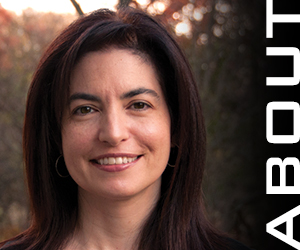Corporate Minds | Winter 2015
Bring on That ‘Aha’ Moment
Finding solutions to pressing issues takes the spirit of innovation. Here are three ways to broaden your perspectives.

Rose Cammarata, CPA, CGMA
Senior Director/Assistant Controller, CDK Global Inc.
Top Issues in Corporate Finance
The study of innovation has exploded over the past 30 years. A quick search on Amazon for books on innovation is proof of that—it yields more than 70,000 results.
Scanning those results, it quickly becomes apparent that the ability to innovate is not just a strategic advantage reserved for entrepreneurs and tech startups, but also a competitive priority for all professionals who are trying to adapt to constant regulatory, technological and cultural evolution.
Innovation can be disruptive or incremental. It can come in the form of a business model, a product, a service, a process or a culture. In simple terms, innovation is a method that starts with identifying an issue or need. It then requires the generation of ideas to address the issue or need. Innovation ends with the development and execution of one or more of those ideas in an impactful way.
Now, assuming you’ve identified and have a clear understanding of the issue, generating the right idea can take time. Unfortunately, though, with the rapid rate of change finance professionals face today, we can’t always afford to wait for an “aha” moment—the “Eureka Effect”—while brushing our teeth or shoveling snow. So how do we increase the odds of experiencing a flash of brilliance when we need it?
There are literally hundreds of books that describe ways to inspire breakthrough ideas. From one finance professional to another, however, here are a few that have worked for me.
The Metaphor Method
One way to trigger the Eureka Effect is to spend more time examining the issue—preferably in diverse ways—in order to gain a greater understanding of it before moving on to generating ideas. Metaphors are a helpful way to gain a different perspective. It’s important to choose a metaphor you understand; my go-tos for analyzing organizational issues, for example, include soccer teams and orchestras. Associate the elements of the issue with the elements of the metaphor, focusing only on similarities, and think about the issue from the viewpoint of each of the roles in the metaphor—the goalkeeper, midfielders, referees and spectators, for example. Write down any ideas that occur to you without regard for how viable they might be. Stay with the metaphor long enough to generate at least three to five ideas.
The Group Approach
Another way to gain different perspectives on an issue is to examine that issue within a group. The key here is to have as much diversity as possible among the group members—whether in terms of profession, education, ethnicity, gender, experience or role within an organization. One of the challenges of group brainstorming is the tendency towards groupthink. One way to counteract this is to first have members come up with ideas on their own. Post-it notes are a good way to collect all those individual ideas. Once gathered, you can group similar ideas together, which in turn makes it easier for members to build off each other’s ideas.
“Questionstorm”
Similar to metaphors, questionstorming (a tool described by Dyer, et al in The Innovator’s DNA) is another way to sharpen your focus on the issue at hand as a means to generate ideas and solutions. This tool can be used by an individual or within a group. The goal is to write down at least 50 questions relating to the issue. If working within a group, make sure everyone can see the questions so they can build off and inspire one another. Group members should ask each question without preamble and write it down completely before moving on to the next question. Ask a full range of “what is,” “what caused,” “why,” “why not” and “what ifs.” Once all the questions are listed, prioritize them, discussing each question in-depth in order of importance to generate insights.
Research shows that you can improve your overall ability to think creatively and generate innovative ideas through practice. My best advice is to use these three approaches regularly to work through issues. Over a relatively short time, 15 minutes a day of questionstorming can significantly improve your ability to ask insight-provoking questions. To up your chances of an aha moment even further, gain exposure to ideas and innovations from fields outside of accounting and finance—such as the arts and sciences. This will help you broaden and diversify the knowledge base from which you can draw those all-important metaphors and ideas.
About Rose Cammarata:
Rose Cammarata CPA, CGMA, MBA is a senior director with the CME Group. She also sits on the ICPAS Board of Directors and Accounting Principals Committee where she draws on her broad public and corporate accounting backgrounds to advance the profession. Rosa also supporting other non-profit and charitable organizations, including the Chicago Botanic Garden, Chicago Zoological Society and Kohl Children's Museum.